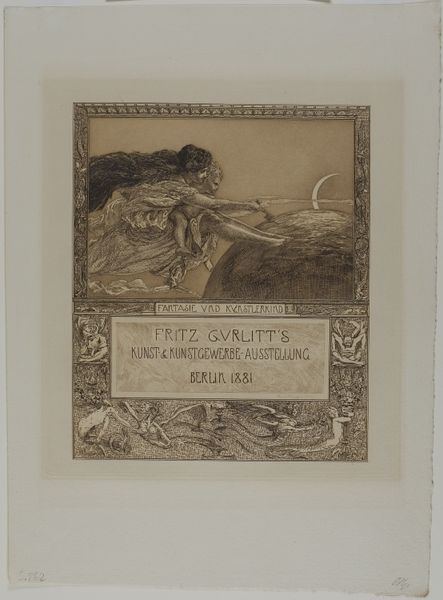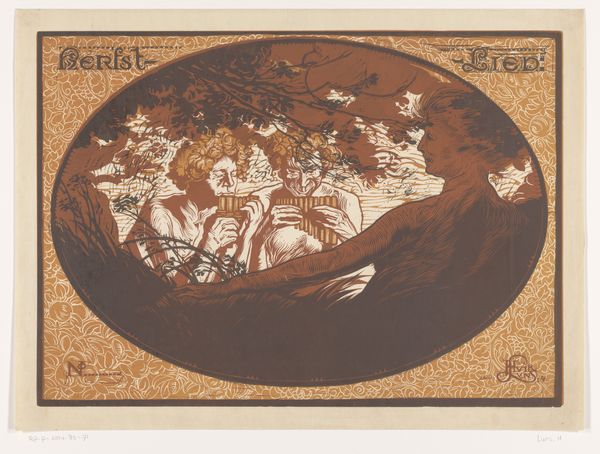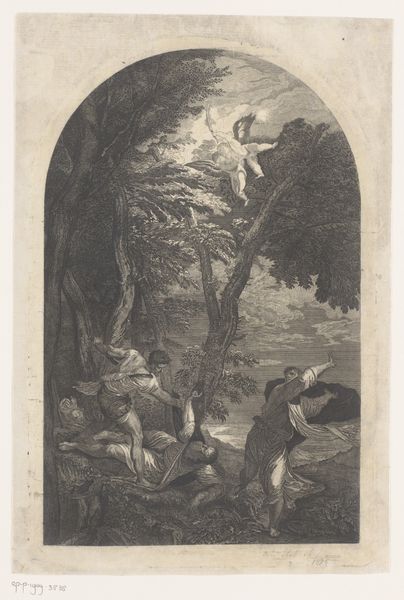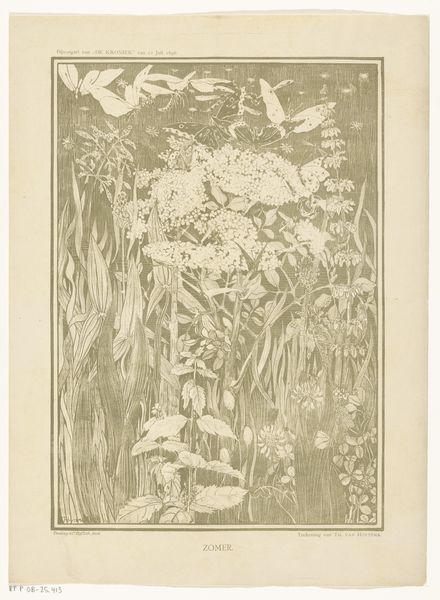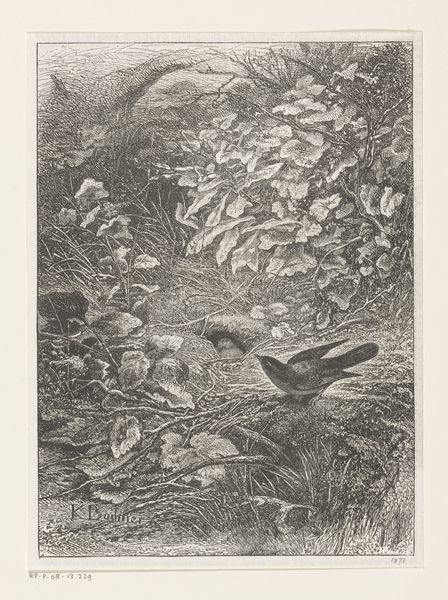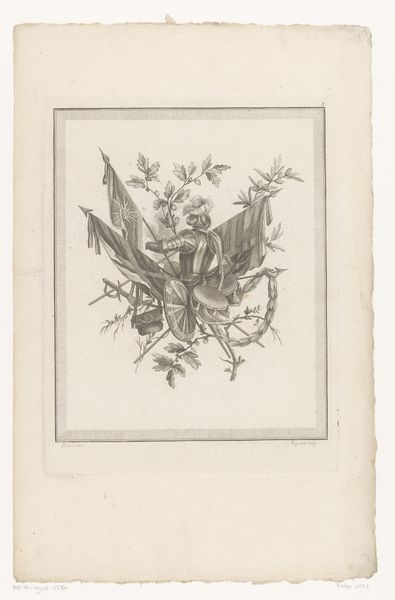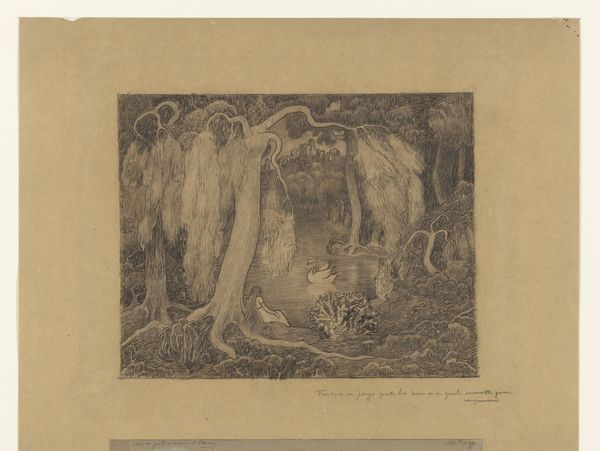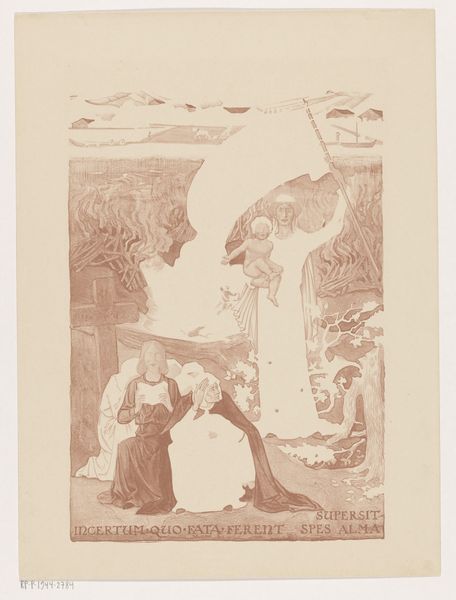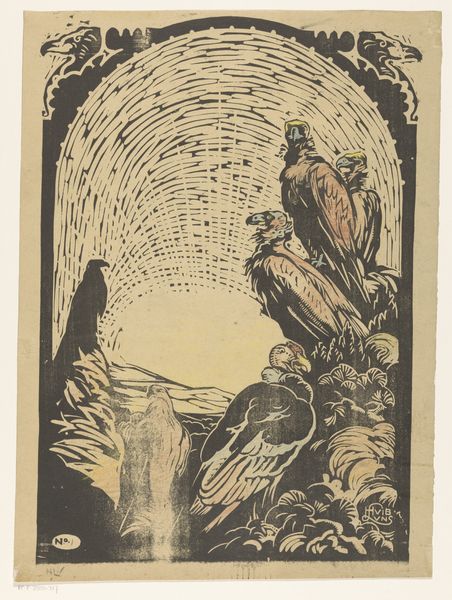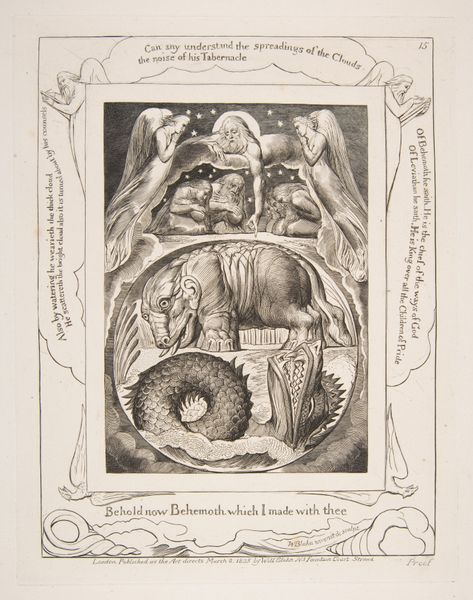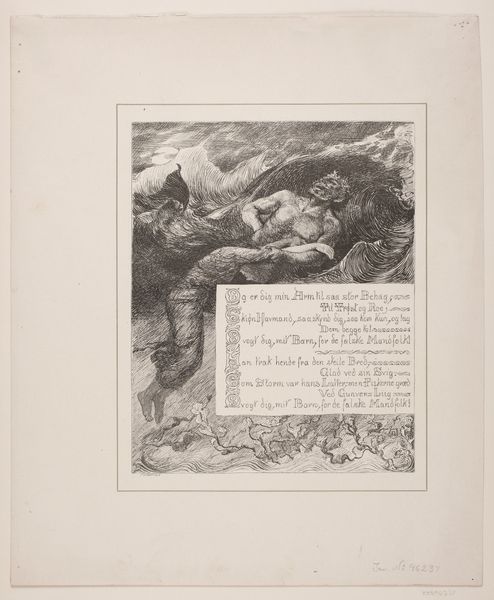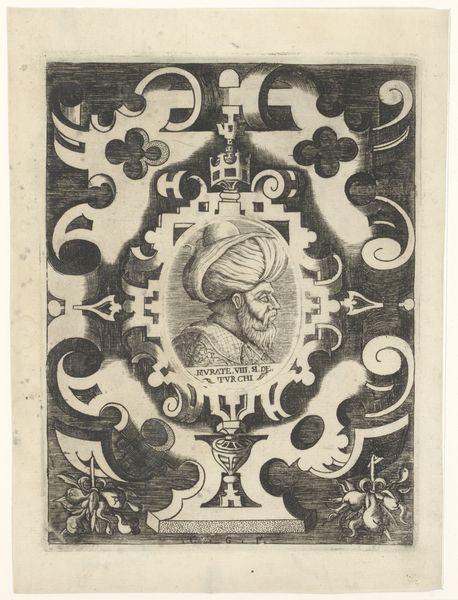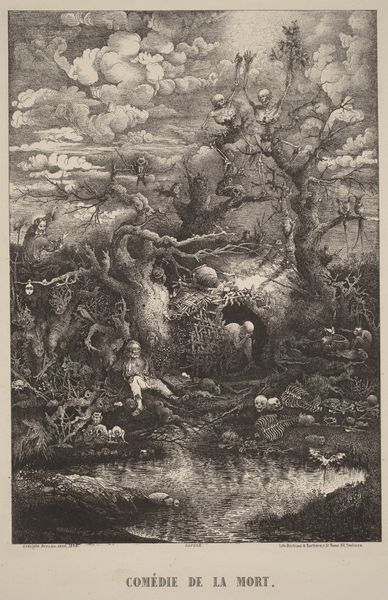
print, watercolor
#
art-nouveau
# print
#
landscape
#
bird
#
watercolor
#
symbolism
#
watercolour illustration
#
natural palette
#
botanical art
Dimensions: height 440 mm, width 210 mm
Copyright: Rijks Museum: Open Domain
Editor: This is “Kalenderblad april met drie vogels,” a 1906 print by Theo van Hoytema, held at the Rijksmuseum. The watercolor illustration evokes a feeling of quiet springtime observation, with its naturalistic palette. As the name suggests, the three birds dominate the illustration, while at the bottom, a simple calendar for April. What can you tell me about it? Curator: This calendar, and others designed by Hoytema, highlights the fascinating intersection of art, commerce, and cultural identity at the turn of the 20th century. We see this calendar not just as an aesthetic object, but as a piece of ephemera reflecting social values. Think about it – a mass-produced calendar, elevated to art through its design. Editor: That's interesting, a calendar being considered elevated. How so? Curator: The Art Nouveau style, evident in the botanical details and flowing lines, suggests an aspiration toward beauty in everyday life. Moreover, the inclusion of the Dutch text is significant. Are we looking at an assertion of national identity in a period of increasing globalization and industrialization? Were the Dutch consumers of that era particularly drawn to their national identity reflected on art? Editor: It could be that, but is it more likely that Dutch artists looked toward the aesthetic movements of the moment, and incorporated text that made them saleable? Curator: Perhaps a commercial strategy, indeed, aligning national pride with marketability, making it appealing to Dutch consumers seeking both aesthetic pleasure and a connection to their cultural roots. It is a blend, isn’t it? The artist simultaneously contributes to and is shaped by societal trends. Editor: Definitely. I see now that this piece tells us as much about the society that consumed it as the artist who created it. Thank you! Curator: Precisely! Art history invites us to look beyond the image itself and to consider its place within a larger cultural narrative. It really adds another dimension to appreciating a simple piece.
Comments
No comments
Be the first to comment and join the conversation on the ultimate creative platform.
